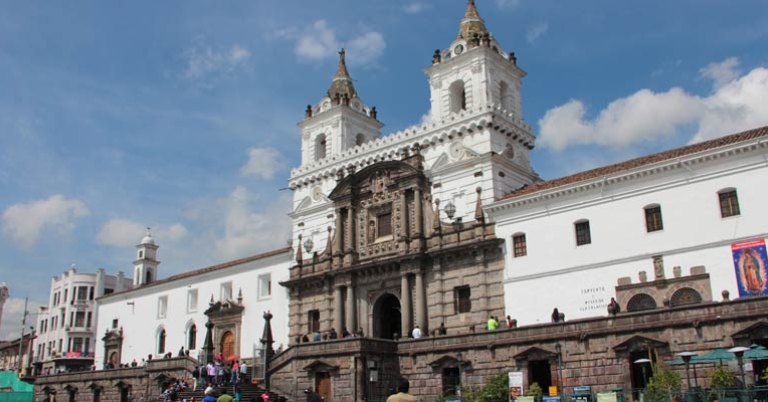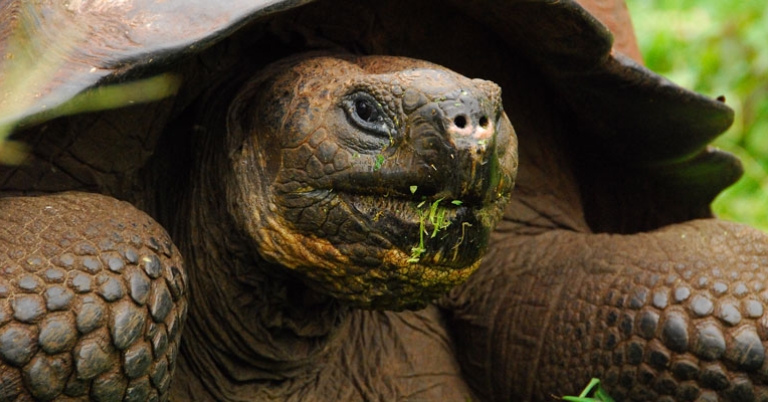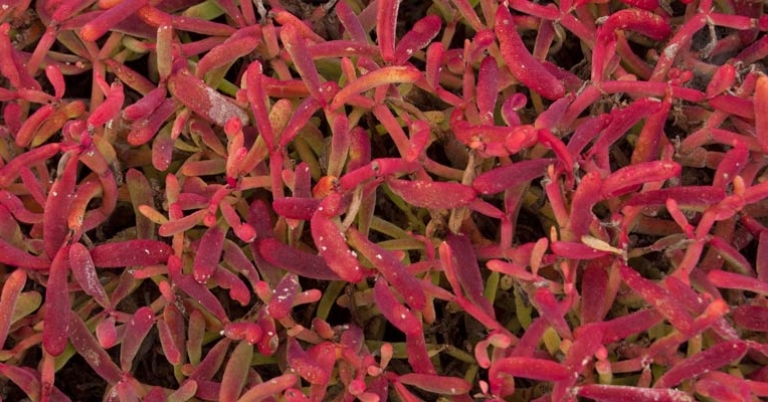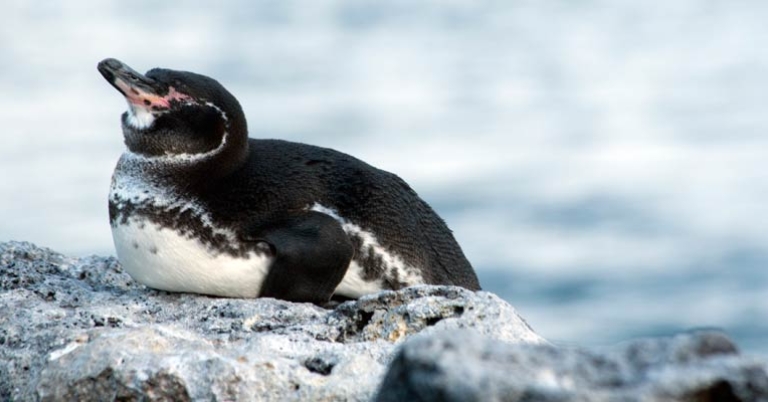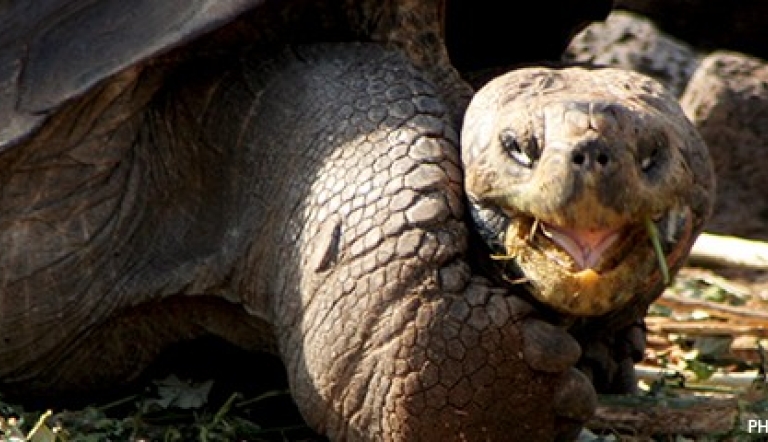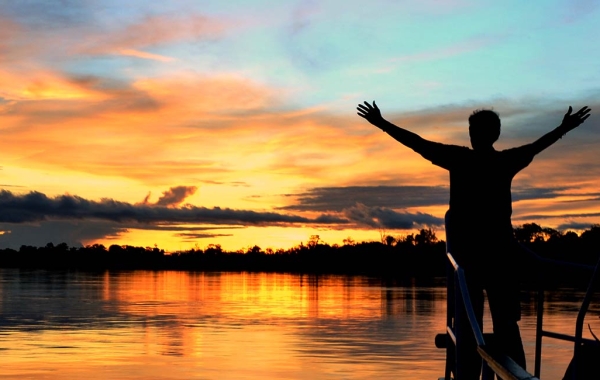Ecuador and Galápagos | Ultimate Ecuador: Biodiversity in the Amazon and Galápagos
About this trip
Ecuador is one of the most biodiverse countries on earth, encompassing varied ecosystems ranging from rainforest and cloud forest to highlands and coast. This ultimate Ecuador exploration introduces you to two biodiversity hotspots for an in-depth appreciation of the many wonders of this equatorial nation. Begin in the Ecuadorian Amazon to observe rainforest flora and fauna, then head to the volcanic landscapes of the Galápagos Islands and explore the wonders that inspired Charles Darwin’s theory of evolution by natural selection, an idea that not only influenced his own life, but also changed the history of the world. Enjoy time in the bustling capital of Quito in the Ecuadorian Andes to round out the experience.
Highlights
- Look for primates, tropical birds, and other wildlife as you travel by boat down the Napo River into the heart of the Ecuadorian Amazon.
- Learn about the Amazon’s Indigenous peoples and their relationship with the forest during guided hikes.
- Follow in Charles Darwin’s footsteps in the Galápagos Islands and come face-to-face with Blue-footed Boobies, giant tortoises, and sea lions.
- Discover fascinating geological history while trekking volcanoes and lava fields.
- Explore historical Quito, a UNESCO World Heritage Site and the best-preserved colonial city center in Latin America.
What makes us different
Sustainable travel
Custom-tailored trips
Marketing support and resources
Low stress travel planning
Expert guides
Flight arrangements
Daily Itinerary
Print ItineraryQuito
Day 1Quito
Day 2Amazonia - Napo River
Day 3Amazonia - Napo River
Day 4Amazonia - Napo River
Day 5Mindo
Day 6Mindo
Day 7Mindo
Day 8Puembo
Day 9Galapagos
Day 10Galapagos
Day 11Galapagos
Day 12Galapagos
Day 13Puembo
Day 14Flight
Day 15Pricing
Print PricingPlease call 800-451-7111 for your price.
What's Included
- Activities and meals as mentioned in itinerary
- Full time guide per region for the duration of your program
- Galapagos National Park fees
- INGALA card
- Non alcoholic beverage with meals
- Snorkel gear
What's Not Included
- International airfare
- Items of personal nature
- Tips
- Travel Insurance
Travel Info
Print Travel InfoEntry & Exit Requirements
U.S. and Canadian citizens must have a valid passport to enter Ecuador. Passports must be valid for at least six months after the date of departure.
For visits fewer than 90 days, visas will be issued upon arrival in Ecuador. Tourists may be required to provide evidence of return or onwards travel.
If you are not traveling with a U.S. passport, please check with the Embassy of Ecuador for the requirements based on your nationality.
Health Information
IMMUNIZATIONS
The Centers for Disease Control recommends that all travelers be up to date on routine vaccinations such as measles-mumps-rubella (MMR) vaccine, diphtheria-pertussis-tetanus vaccine, varicella (chicken pox) vaccine, and your yearly flu shot before every trip.
There are no vaccinations required for entry into Ecuador (unless you are traveling from Brazil, Democratic Republic of the Congo, or Uganda, in which case proof of yellow fever vaccine is required).
Some physicians recommend that travelers get hepatitis A and typhoid vaccines before visiting Ecuador.
Please consult your physician for additional information and recommendations based on your individual circumstances.
MALARIA
Malaria is not known to be present in Guayaquil or Quito or in the Galápagos Islands. According to the CDC, the estimated relative risk of malaria for U.S. travelers in Ecuador is low. If you are concerned about malaria prevention, please consult your physician.
Dengue Fever & Other Insect-borne Illnesses
Locally transmitted cases of dengue fever have been reported in Ecuador. Local transmission means that mosquitoes in the area have been infected with dengue and are spreading it to people. In addition, locally transmitted cases of chikungunya, Zika virus, and other insect-borne illnesses have previously been reported in Ecuador. The CDC recommends that travelers to Ecuador protect themselves against insect bites. As a precaution, the CDC advises women who are pregnant to consider postponing travel to any area where Zika virus transmission is ongoing.
SEA SICKNESS
If you’re prone to feeling queasy, we suggest you consult your physician for advice on the best ways to prevent motion sickness.
ALTITUDE SICKNESS
Upon arrival at locations of high elevation, shortness of breath and a pounding heart are normal responses to the lack of oxygen in the air. However, for some visitors, these symptoms can deteriorate into altitude sickness. Headache, extreme tiredness, dizziness, nausea, and loss of appetite are standard symptoms. Staying hydrated and well rested is important to adjust to the altitude. Avoiding heavy, fatty foods and alcohol in the days before arriving to altitude can help. Over-the-counter medications are also available to help prevent or alleviate symptoms. It’s advisable to avoid sleep medications, as they can slow breathing and respiration, which aid in getting the blood oxygenated while sleeping. Participants who take blood pressure medications should discuss this with their doctor as the medication can drop pressure too low at times.
Resources
Print ResourcesVideo: Galápagos Fitness Information
Video: Snorkeling in the Galapagos
Suggested Packing List
Everyone has personal preferences when it comes to packing; for this reason, the information below is offered as a general guide and not a definitive list. You know yourself best: Use your discretion and pack what you think will serve you, based on your personal preferences and specific itinerary.
You may find many of the items below in the New Headings Gear Store. Use code HolbrookGuest10 for a 10% discount on your purchase.
CLOTHING
Casual, comfortable clothing is suitable for most activities. You may wish to bring a slightly nicer outfit or two (eg sundress, polo shirt) if your itinerary includes dinners out or more formal activities.
Bring enough clothing suitable for the length of your program. Pack clothing that can be worn in layers to adapt to weather changes throughout the day.
- A combination of short-sleeved and lightweight, long-sleeved shirts for sun and mosquito protection
- Shorts
- Lightweight, quick-drying long pants for sun and mosquito protection
- Undergarments
- Sleepwear
- Lightweight jacket or sweater/sweatshirt
- 1-2 bathing suit(s)
- Socks
- Shoes – Consider your specific itinerary when choosing footwear. For most programs, you’ll likely want at least one pair of comfortable, closed-toe walking or hiking shoes suitable for forest hikes and walking over cobblestones or other uneven terrain. Sturdier hiking boots may be appropriate for more active itineraries. In addition, many participants opt for a pair of sturdy sport-strap sandals (e.g. Keens, Tevas, or similar) and/or casual flip-flops or sandals. In the Galápagos, a pair of aqua socks, reef walkers, or water shoes is recommended.
- Lightweight rain jacket, hooded poncho, and/or windbreaker
- Visor or wide-brimmed sun hat
- Bandana, scarf, or neck gaiter
Personal toiletries
Pack toiletries based on your personal preferences and habits. Below are just a few recommendations to keep in mind.
- Shampoo, conditioner, lotion, deodorant/antiperspirant, etc.
- Soap and washcloth or a small, quick-drying microfiber towel – Washcloths are not standard in all hotels. If you normally use a washcloth, you may wish to bring one from home.
- Hairbrush, comb, hair ties, shower cap.
- Toothbrush and toothpaste
- Razor
- Ear plugs, especially if you are a light sleeper
- Personal hygiene products
- Insect repellent with DEET or picaridin
- Reef-safe sunscreen and lip balm with SPF
- Aloe vera gel
- A travel pack of tissues – also useful as napkins or toilet paper if needed
In addition to your personal toiletries, it is useful to pack a small medical kit, which you can easily prepare. Helpful items might include: bandages, antihistamine, a pain reliever, motion sickness and/or altitude sickness medication (if you are prone to either), anti-diarrhea medicine, individually wrapped pre-moistened towelettes and/or hand sanitizer, antibiotic ointment, anti-fungal cream, moleskin for blisters, eye drops, tweezers, a mini sewing kit, and an extra pair of disposable contact lenses or eyeglasses if you wear them.
MISCELLANEOUS
Remember to pack valuables such as your passport, cash/credit cards, and medications in your carry-on luggage.
- Passport and photocopies of all travel documentation
- Personal insurance card and travel insurance information
- Money – ATM/credit card, traveler's checks, and/or cash; small bills in good condition are recommended
- Prescription medicines (if applicable), with a copy of the prescription
- Yellow fever certificate (if required; only if arriving from a country where yellow fever transmission is a risk)
- Sunglasses with strap
- Small day pack for hikes and excursions
- Flashlight and/or head lamp
- Travel alarm clock or inexpensive waterproof wristwatch with alarm – Not all hotels provide alarm clocks.
- Binoculars with lens cleaner
- Camera and related equipment, such as charger, lenses, and extra memory cards
- Reusable water bottle
- Non-perishable snacks
- Pocket knife or multipurpose tool - Pack in your checked luggage
- Zip-top style bags – useful for packing toiletries, sorting clothing, storing damp or muddy shoes, or as a dry bag for protecting electronics
- Notepad or travel journal and pen
- Music or reading material for down time, long bus drives, or on the airplane, and a portable bright light to read by
- Walking stick with rubber tip (folding or collapsible, for walking on rough and uneven terrain)
- Swim mask/fins (snorkeling equipment is available to rent and often included for most groups)
- A small quantity of laundry detergent if you’ll be washing clothing by hand
- Money belt
- Converter and adapter for electronics
- Chargers for electronics
NOTE: There is a weight limit of 50 lbs. of checked luggage and one carry-on per person for your flight to the Galápagos Islands. Your luggage and/or carry-on may be subject to inspection by the Ecuadorian government in an effort to prevent the introduction of foreign plants and animals to the Galápagos Islands.

Questions
For more information, contact us at 800-451-7111 or email travel@holbrooktravel.com.


